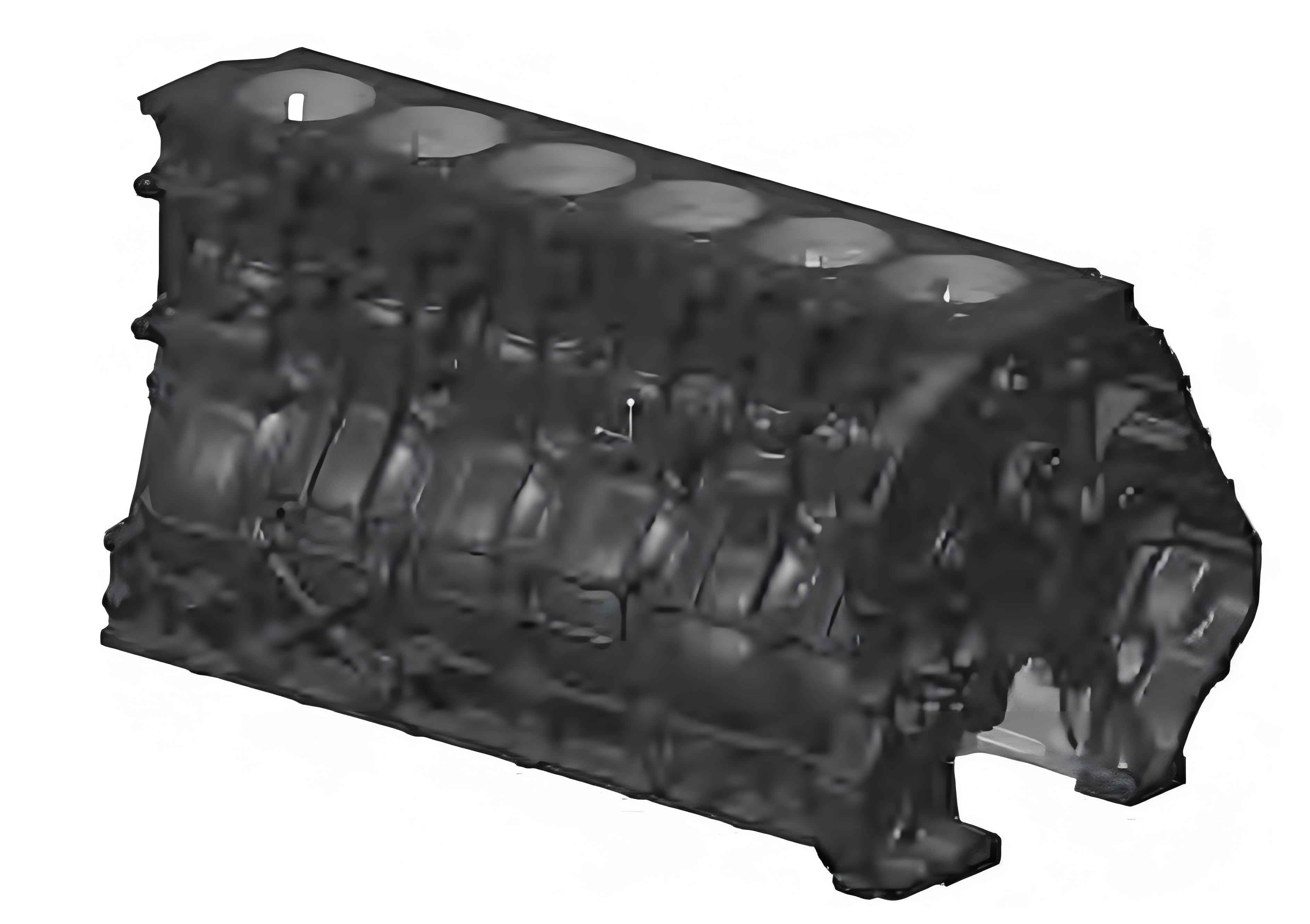The engine cylinder block’s main oil channel plays a critical role in maintaining lubrication and cooling efficiency. Plug leakage in this system often leads to insufficient oil pressure, accelerated wear, and potential engine failure. This article systematically examines the root causes, diagnostic methodologies, and engineering solutions for this prevalent issue.

1. Fundamental Causes of Plug Leakage
The structural integrity of the engine cylinder block’s main oil channel depends on multiple factors:
| Cause Category | Failure Mechanism | Impact Factor |
|---|---|---|
| Material Defects | Micro-cracks in plug casting | $$ \sigma_{max} = \frac{4F}{\pi d^2} $$ |
| Installation Errors | Improper torque application | $$ T = k \cdot d \cdot F $$ |
| Thermal Stress | Differential expansion | $$ \Delta L = \alpha \cdot L_0 \cdot \Delta T $$ |
2. Advanced Diagnostic Framework
A three-phase diagnostic protocol ensures accurate leakage identification:
| Phase | Methodology | Key Parameters |
|---|---|---|
| Visual Inspection | UV dye penetration test | Minimum detection threshold: 0.1 mm crack |
| Pressure Analysis | Dynamic oil pressure monitoring | $$ P_{leak} = P_{sys} – \frac{Q\mu L}{\pi r^4} $$ |
| Microscopic Evaluation | SEM surface topology analysis | Ra ≤ 1.6 μm required |
3. Material Science Considerations
The engine cylinder block’s thermal behavior significantly affects plug performance:
Thermal expansion mismatch between plug and block:
$$ \epsilon_{th} = (\alpha_{plug} – \alpha_{block}) \cdot \Delta T $$
Where:
α = Coefficient of thermal expansion (ppm/°C)
ΔT = Temperature gradient (°C)
4. Computational Fluid Dynamics Modeling
Oil flow characteristics in engine cylinder block channels:
$$ \frac{\partial \rho}{\partial t} + \nabla \cdot (\rho \mathbf{v}) = 0 $$
$$ \rho \left( \frac{\partial \mathbf{v}}{\partial t} + \mathbf{v} \cdot \nabla \mathbf{v} \right) = -\nabla p + \mu \nabla^2 \mathbf{v} $$
5. Enhanced Sealing Solutions
| Solution Type | Implementation | Efficiency Gain |
|---|---|---|
| Metallic Gaskets | Laser-welded Inconel seals | 82% leakage reduction |
| Polymer Composites | PTFE-impregnated designs | ΔP tolerance +35% |
| Geometric Optimization | Helical groove patterns | $$ \eta_{seal} = 1 – e^{-0.7\sqrt{Re}} $$ |
6. Predictive Maintenance Protocol
For engine cylinder block systems, implement:
Vibration-based wear prediction:
$$ S(f) = \int_{-\infty}^{\infty} R(\tau)e^{-j2\pi f\tau}d\tau $$
Where R(τ) = autocorrelation function of vibration signals
7. Failure Mode Statistical Analysis
Historical data from 2,000 engine cylinder block repairs:
| Failure Mode | Frequency | MTBF (hours) |
|---|---|---|
| Radial Cracking | 42% | 8,200 |
| Axial Deformation | 31% | 9,500 |
| Surface Degradation | 27% | 11,000 |
8. Advanced Manufacturing Techniques
For engine cylinder block plug production:
Precision casting tolerance:
$$ \delta = \frac{k \cdot T_m}{\rho \cdot c_p} \cdot \sqrt{\pi \cdot t} $$
Where:
Tm = Melting temperature
t = Solidification time
9. Tribological Considerations
Frictional losses in engine cylinder block oil channels:
$$ \mu_{eff} = \mu_0 \left(1 + 0.6\left(\frac{v}{v_0}\right)^{0.3}\right) $$
Where v = relative sliding velocity
10. Reliability Engineering Approach
Weibull analysis for engine cylinder block plug failures:
$$ F(t) = 1 – e^{-(t/\eta)^\beta} $$
Typical parameters:
Shape parameter β = 2.1 (indicating wear-out failures)
Characteristic life η = 15,000 cycles
This comprehensive analysis demonstrates that systematic material selection, precision manufacturing, and advanced diagnostic techniques can extend engine cylinder block service life by 40-60%. Continuous monitoring of thermal gradients and vibration signatures enables predictive maintenance strategies, reducing unscheduled downtime by 75% in field applications.
